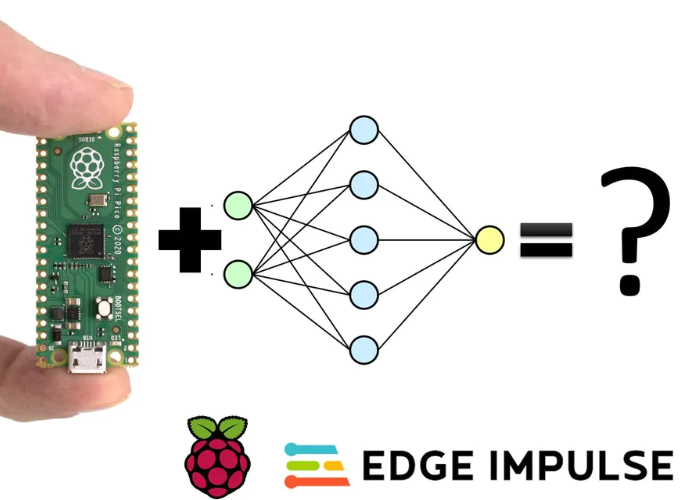
Robotics has many advantages in the medical field. Robots are safer that humans. They can safely handle hazardous materials, heavy loads, or repetitive tasks. Then, they save time and money because humans can focus on the more complex surgeries. They can also fit parts that a human hands cannot. This means that patients will experience less pain and need fewer invasive procedures. Robotics is a promising field that is constantly developing. But is robotic technology really all they seem to be?
Classification of robots
There are several classifications that can be used to classify robots. The type of motion that robots perform can be used to classify them. These robots can have simple, two-jointed designs or can include complex systems that contain ten or even more interconnected joints. An articulated robot has a structure similar to a human's arm. The limbs of a robot are flexible and can move in many different directions, and the articulation determines how it performs various tasks.
The most basic classification of robots are those that follow human instructions. Humans never want a robot to disobey their orders. Karel Capek (Czech writer) first used the term robot in 1921. Joseph F. Engel Berger established the UNIMATION Robotics Company, and in 1957 he began to build his first robot. His company created a programable robot and he patented a robot named ATLAS.

Robotics Applications
Industries of all sizes are using industrial robots for various tasks. Their abilities include fabrication, finishing, transfer, assembly, and picking and sorting. They can also assist with packaging, palletizing, or other packaging processes. Robotics are also being used in manufacturing and clinical labs. A variety of retail sectors are also using robots as collaborative tools in public places. Regardless of their intended applications, they are becoming increasingly important to society.
Advanced robots are capable to imitate nearly every human sense, including sight and tactile. They can also perform hand-to-hand coordination. Some robots can be programmed to learn and repeat a sequence of motions on their own. Robots can even duplicate all human movements, including complex wrist or joint motions. Robots can perform all of these tasks and more. They can also learn new tasks by using sophisticated software.
The future of robotics
Robotics will continue to be based on the rapid integration of these machines into daily life. Robots will become more integrated in all areas of human activity within the next decade. We are already witnessing the emergence of collaborative robots in factories, which are specifically designed to work alongside humans. These robots can be equipped with sophisticated safety features, such sensors that detect if they are within a certain distance of an animal or person.
The creation of new industries has been made possible by the industrial robotics. The demand for robots has increased in response to changes in consumer behavior. The rise of online delivery and marketplaces has boosted robotic methods. Mobile robots are being used by businesses to carry out maintenance tasks within manufacturing processes. Robots learn from their operators, and can respond to their queries. Additionally, restaurants are increasingly incorporating robotics in various areas of their business operations.

Robot ethics
There are many ethical issues that robotics can cause. Isaac Asimov, author of 2001: A Space Odyssey, set out three guidelines for robots' moral behavior: They should never harm human beings, comply with human instructions, and be safe. You can find the British Standards Institute’s premium article on ethical robotics to better understand these guidelines. Here are the top three concerns:
Robots can't replace human friendship. These robots might have positive effects on their users but they cannot replace human friendship. Robots can't form emotional bonds and mature human relationships. Robot ethics are complex. These questions will likely continue to be debated as technology progresses. Despite their potential benefits, however, robots are still far from perfect, and we must not forget that humans are the only ones who have the right to make moral decisions.
FAQ
How does AI work
An algorithm is a set of instructions that tells a computer how to solve a problem. A sequence of steps can be used to express an algorithm. Each step has a condition that dictates when it should be executed. A computer executes each instructions sequentially until all conditions can be met. This is repeated until the final result can be achieved.
For example, suppose you want the square root for 5. It is possible to write down every number between 1-10, calculate the square root for each and then take the average. However, this isn't practical. You can write the following formula instead:
sqrt(x) x^0.5
This means that you need to square your input, divide it with 2, and multiply it by 0.5.
The same principle is followed by a computer. It takes your input, squares it, divides by 2, multiplies by 0.5, adds 1, subtracts 1, and finally outputs the answer.
What is the most recent AI invention
Deep Learning is the latest AI invention. Deep learning is an artificial intelligence technique that uses neural networks (a type of machine learning) to perform tasks such as image recognition, speech recognition, language translation, and natural language processing. Google created it in 2012.
The most recent example of deep learning was when Google used it to create a computer program capable of writing its own code. This was achieved using "Google Brain," a neural network that was trained from a large amount of data gleaned from YouTube videos.
This enabled the system to create programs for itself.
IBM announced in 2015 they had created a computer program that could create music. The neural networks also play a role in music creation. These are sometimes called NNFM or neural networks for music.
What are the possibilities for AI?
AI serves two primary purposes.
* Prediction-AI systems can forecast future events. AI systems can also be used by self-driving vehicles to detect traffic lights and make sure they stop at red ones.
* Decision making. AI systems can make important decisions for us. For example, your phone can recognize faces and suggest friends call.
Who created AI?
Alan Turing
Turing was created in 1912. His father was a clergyman, and his mother was a nurse. At school, he excelled at mathematics but became depressed after being rejected by Cambridge University. He took up chess and won several tournaments. He was a British code-breaking specialist, Bletchley Park. There he cracked German codes.
He died on April 5, 1954.
John McCarthy
McCarthy was born 1928. He studied maths at Princeton University before joining MIT. There he developed the LISP programming language. By 1957 he had created the foundations of modern AI.
He died in 2011.
Is Alexa an Artificial Intelligence?
The answer is yes. But not quite yet.
Amazon has developed Alexa, a cloud-based voice system. It allows users use their voice to interact directly with devices.
First, the Echo smart speaker released Alexa technology. Other companies have since created their own versions with similar technology.
Some of these include Google Home, Apple's Siri, and Microsoft's Cortana.
AI is it good?
AI is seen both positively and negatively. The positive side is that AI makes it possible to complete tasks faster than ever. There is no need to spend hours creating programs to do things like spreadsheets and word processing. Instead, our computers can do these tasks for us.
People fear that AI may replace humans. Many believe that robots could eventually be smarter than their creators. They may even take over jobs.
What is the future of AI?
Artificial intelligence (AI), which is the future of artificial intelligence, does not rely on building machines smarter than humans. It focuses instead on creating systems that learn and improve from experience.
This means that machines need to learn how to learn.
This would mean developing algorithms that could teach each other by example.
We should also consider the possibility of designing our own learning algorithms.
Most importantly, they must be able to adapt to any situation.
Statistics
- More than 70 percent of users claim they book trips on their phones, review travel tips, and research local landmarks and restaurants. (builtin.com)
- Additionally, keeping in mind the current crisis, the AI is designed in a manner where it reduces the carbon footprint by 20-40%. (analyticsinsight.net)
- A 2021 Pew Research survey revealed that 37 percent of respondents who are more concerned than excited about AI had concerns including job loss, privacy, and AI's potential to “surpass human skills.” (builtin.com)
- While all of it is still what seems like a far way off, the future of this technology presents a Catch-22, able to solve the world's problems and likely to power all the A.I. systems on earth, but also incredibly dangerous in the wrong hands. (forbes.com)
- In the first half of 2017, the company discovered and banned 300,000 terrorist-linked accounts, 95 percent of which were found by non-human, artificially intelligent machines. (builtin.com)
External Links
How To
How to set up Amazon Echo Dot
Amazon Echo Dot, a small device, connects to your Wi Fi network. It allows you to use voice commands for smart home devices such as lights, fans, thermostats, and more. You can use "Alexa" for music, weather, sports scores and more. You can ask questions, make phone calls, send texts, add calendar events, play video games, read the news and get driving directions. You can also order food from nearby restaurants. It works with any Bluetooth speaker or headphones (sold separately), so you can listen to music throughout your house without wires.
You can connect your Alexa-enabled device to your TV via an HDMI cable or wireless adapter. You can use the Echo Dot with multiple TVs by purchasing one wireless adapter. You can pair multiple Echos together, so they can work together even though they're not physically in the same room.
These steps will help you set up your Echo Dot.
-
Your Echo Dot should be turned off
-
The Echo Dot's Ethernet port allows you to connect it to your Wi Fi router. Make sure to turn off the power switch.
-
Open Alexa on your tablet or smartphone.
-
Choose Echo Dot from the available devices.
-
Select Add New Device.
-
Select Echo Dot (from the drop-down) from the list.
-
Follow the on-screen instructions.
-
When asked, enter the name that you would like to be associated with your Echo Dot.
-
Tap Allow Access.
-
Wait until the Echo Dot has successfully connected to your Wi-Fi.
-
Do this again for all Echo Dots.
-
Enjoy hands-free convenience